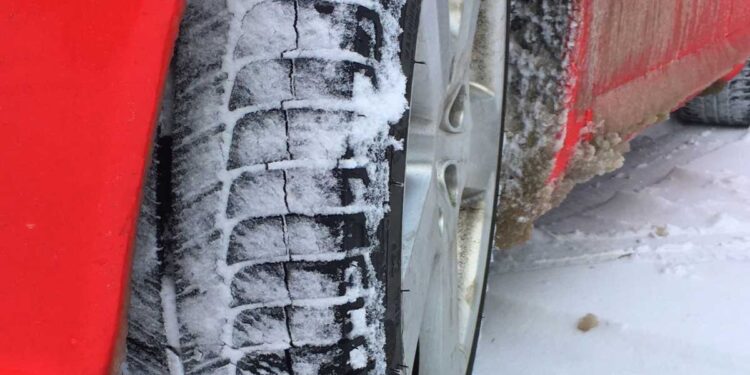If you endure true winter conditions, then on the basis of safety you should give serious consideration to running snow tires on your vehicle in the winter months. Now we know that sounds all fatherlike and whatnot, but just read on and see if you don’t come to agree… Whippersnapper.
There are numerous misconceptions about snow tires, as well as purported snow tire alternatives. Here’s what you need to know –
Snow tires are a standalone tire category. In other words, snow tires aren’t subsumed into any broader tire category. All terrain tires aren’t snow tires. All season tires aren’t snow tires. Off road tires aren’t snow tires, and so on, and vice versa, and so forth. Got it? Okay…
So what are snow tires?
Snow tires are engineered by tire manufacturers for exclusive use in winter temperatures and conditions. In fact, it’s inadvisable to use snow tires during any other seasons.
Therefore, tire manufacturers are able to put the entire engineering priority on wintertime traction and performance. Unlike all season, all terrain, and other tires with diverse purposes (resulting in various performance compromises), snow tires have a singular purpose: Provide superior traction in winter.
Legitimate snow tires are branded (in the U.S. and Canada) with the Alpine Symbol pictured below.

To garner “Alpine” status, a snow tire must pass a bevy of objective snow/winter condition tests, and achieve a distinguished level of high performance in those conditions.
This Alpine Symbol is branded on the sidewall of full fledged snow tires that have met objective snow tire performance standards.
You might be wondering, how much better could snow tires possibly be than the tires that came from the factory on my (insert vehicle here)?
The factory, “original equipment” tire. Surely the manufacturer of my vehicle fitted tires capable of addressing all road conditions, right?
In many cases manufacturers fit vehicles with all season tires that provide a modicum of winter capability, but the performance difference between snow tires and all season tires is more drastic than one might initially think.
The two charts below compare snow and ice braking performance of various tires.
The chart on the left details braking distances (in feet) of legitimate snow tires on snow and ice. The chart on the right details the snow and ice braking distances of some of the best all season tires currently available. (Superior to most original equipment tires.)
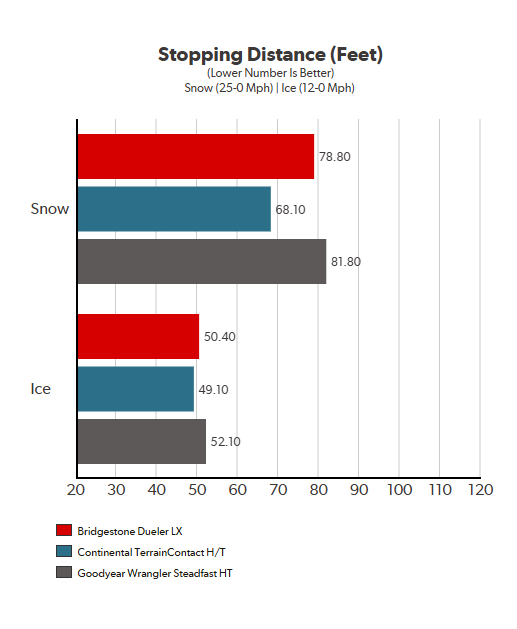
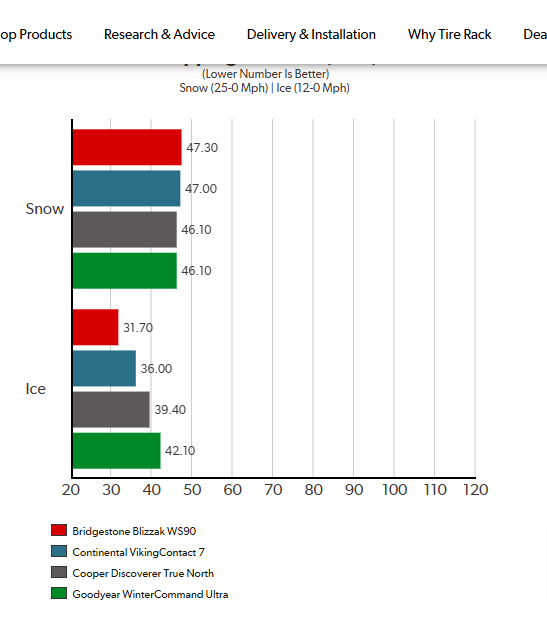
As you can see, the braking performance difference between snow tires and high quality all season tires is quite drastic.
But doesn’t 4-wheel drive, or all-wheel drive help to overcome the disadvantage of a non-snow tire?
Certainly a 4-wheel drive, or all-wheel drive vehicle will do better than a 2-wheel drive vehicle with equal tires when it comes to acceleration in wintry conditions. However, the all-wheel drive traction systems do nothing for you under braking, and when it comes to handling, all-wheel drive systems require sufficient traction to function as intended. When roads are snow or ice covered, sufficient traction means snow tires.
Consider the following tire test results – same vehicle, same day, snow tires vs all season tires:
Test vehicle: Porsche Cayenne SUV (All-wheel drive)
Acceleration to 200’ –
With snow tires: 6 seconds
With all season tires: 8 seconds
Stopping from 30 mph –
With snow tires: 61’
With all season tires: 102’
Various EU nations actually mandate snow tires in the winter months.
This marked performance differential between snow tires and alternatives, and the accordant safety implications are the reason why numerous European countries have actually mandated snow tire use in the winter months. In fact in Andorra, Austria, Czech Republic, Estonia, Finland, Germany, Latvia, Lithuania, Luxembourg, Montenegro, Norway, Romania, Serbia, Slovenia and Sweden snow tire use is compulsory in the winter months.
Unfortunately, snow tires are all too often considered optional equipment here in the United States, and/or thought to be reserved only for those conquering Rocky Mountain passes through the winter. The result is that only an estimated 20% of drivers who face winter conditions equip their vehicles with snow tires.
But everyone who lives in northern climates can think back on a harrowing winter journey, or a baker’s dozen of them… Could you have used the extra performance and security of a snow tire in those instances? Surely. And once the advantages of a true snow tire are experienced, there is no going back.
For maximum safety and vehicle control in wintry conditions, snow tires are a must. When it comes to providing sufficient winter driving performance, there is no substitute for a snow tire.
Snow Tire vs All Season Tire
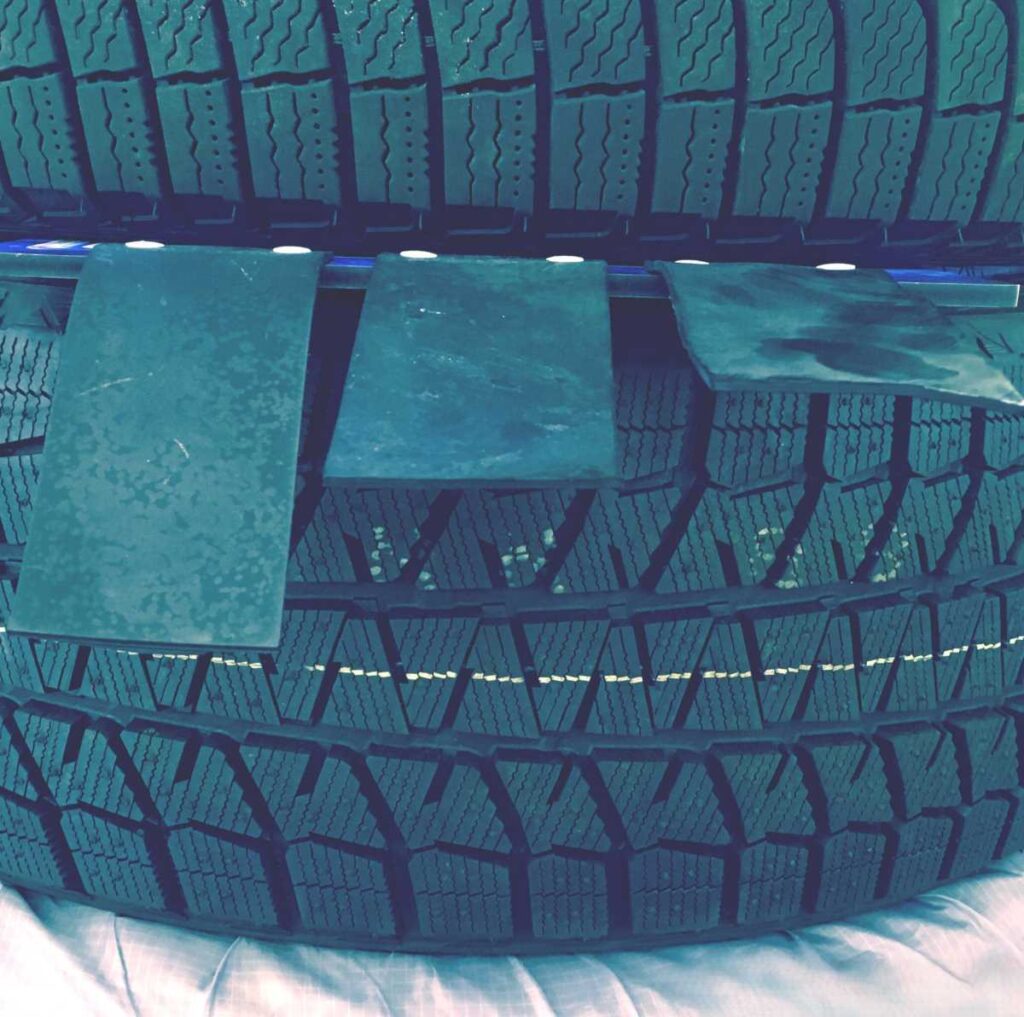
What is the single most important factor when it comes to winter driving performance and safety?
If you listen only to car manufacturer commercials, you might think “advanced” all-wheel drive systems or braking capability are most important. And if you listen to Buford at the local tavern, you probably know that a “good ‘murican 4-wheel drive and a ‘pair’ will get ya through anything.”
The truth is that tires have the greatest influence on a vehicle’s winter performance, and it’s not even close. There is good reason why various EU nations actually mandate snow tires in the winter months.
To bring the importance and exceptional capability of snow tires into focus, we had some fun with… err, conducted objective and scientific comparison testing with a couple of relatively closely matched Bavarian performance sedans.
Audi S4 (Michelin X-Ice Xi3) vs BMW 335i xDrive (All Season Tire) Snow Testing.

F30 BMW 335i xDrive (all-wheel drive)
- 320 hp
- 4.4 seconds 0-60
- 60-0 braking 108’
- Tire size & make: 225/45-18 front, 255/40-18 rear
- Continental ContiProContact SSR (all season tire)
B7 Audi S4 Quattro (all-wheel drive)
- 340 hp 5.2 seconds 0-60
- 60-0 braking 117’
- Tire size & make: 235/40-18
- Michelin X-Ice Xi3 (winter/snow tire)
Snow Tire vs All Season Tire: Dry conditions Test
While the B7 Audi S4 is our own, we must acknowledge that the more current F30 BMW 335i xDrive holds a distinct performance edge in dry conditions.
But on a snow covered road with tire inequality, the results are very different indeed.
Continental manufactures some of the very best all season tires on the market, but when it comes to winter performance, the ContiProContact SSR certainly isn’t one of them. The fact is though, the average snow performance of the ContiProContact SSR is representative of perhaps most of the all season tires on wintry roadways. The ContiProContact SSR is therefore an appropriate reference point for the purposes of this test.
On the Audi S4 side, the Michelin X-Ice Xi3 snow tire handles winter like the Abominable Snowman. Fair fight? Nope… but that’s the point.
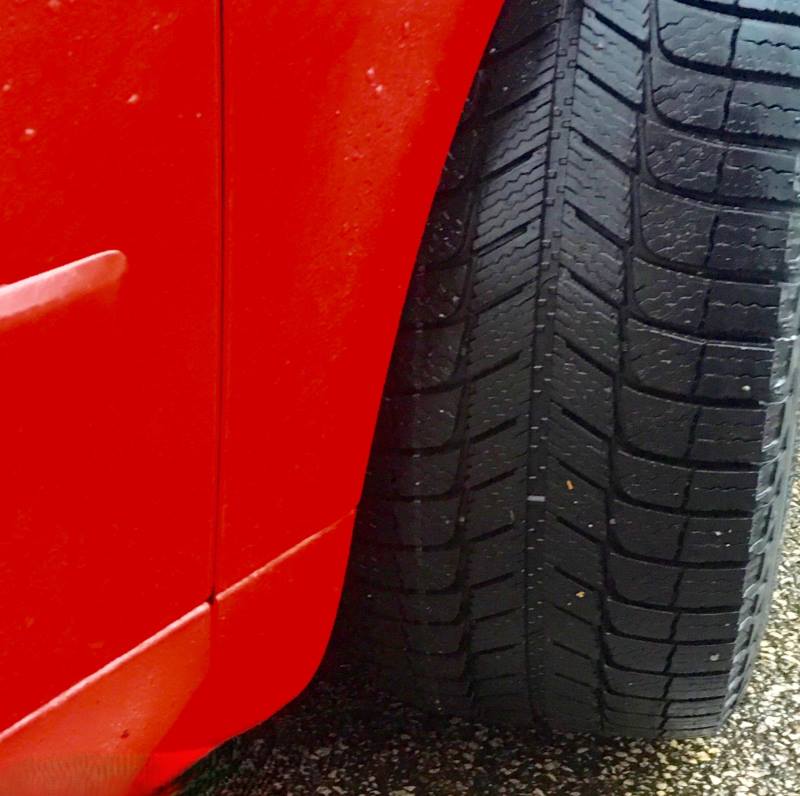
Snow Tire vs All Season Tire: Braking Performance Test
Speeds are reduced in winter conditions, so while braking performance is often evaluated from 60 mph to 0, we opted for a more realistic 40 mph to 0 test.
Fitted with the Michelin X-Ice Xi3, the Audi S4’s best stop from 40 mph was 39 ft. shorter than the BMW’s best.
To put that into perspective, the average car length is about 15 ft. So we’re talking two full car lengths plus a Smart car.
To further emphasize the brake distance disparity, consider that (in dry conditions) a Kia Sorento AWD SUV stops from 60 mph in 122 ft., while the Porsche 918 Spyder hypercar completes the task in 94 ft. A difference of just 28 ft.
- In terms of braking times, the Audi S4 with Michelin X-Ice Xi3 stopped from 40 mph in about 4.95 seconds. The BMW 335i xDrive with all season tires required 6.34 seconds to complete the same task.
Subjectively speaking from behind the wheel, the brake performance advantage of the Michelin X-Ice Xi3 is as significant as it sounds. The braking power and control provided by the Michelin snow tire is simply on another level from the Continental all season.
One of the distinct advantages is the ability of the Michelin X-Ice Xi3 to stay short of/avoid the ABS engagement threshold, and the Michelin snow tire facilitates brake pedal modulation to accomplish that. On the other hand, applying any notable brake pressure in the BMW at 40 mph resulted in almost immediate ABS intervention. Note (hear) the difference in ABS activity between the two vehicles in the video at the base of this Update.
As a result of the ability to brake with force, but stay short of the ABS engagement threshold, the X-Ice Xi3 possesses far superior lateral maneuverability under braking as well. We didn’t quantify that capability in this particular test, but take our word for it.
Acceleration Performance Test
Outside of the World Rally Championship, maximum snow acceleration isn’t particularly relevant, but look, we weren’t about to turn down the opportunity to do some snow launches… And while you might not be timing your acceleration times on snow covered roads, maximum acceleration is an indication of just how much longitudinal grip a tire has to offer.
Once again the X-Ice Xi3 dominated. 0-40 mph took just 5.53 seconds in the Audi, whereas the BMW required 8.26 seconds to slither its way up to the 40 mph mark. The acceleration footage in the video below shows the massive traction disparity.
Conclusion
Proper winter tires like the Michelin X-Ice Xi3 really are the most effective way to achieve a significant winter performance and safety advantage. Once experienced, a driver will be highly unlikely to settle for anything less.
However, convincing many to move on from tires that are “good enough” in winter months can be a challenge. If you’re one of those holdouts, hopefully the results herein will encourage you to reconsider. Think of it as upgrading from a Kia Sorento to a Porsche 918 Spyder.

